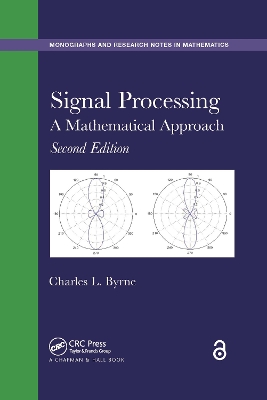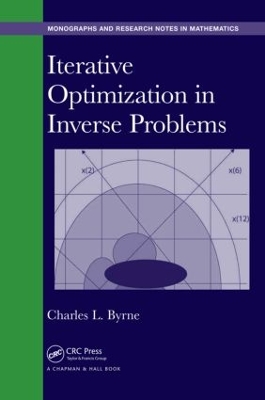Chapman & Hall/CRC Monographs and Research Notes in Mathematics
2 total works
Signal Processing: A Mathematical Approach is designed to show how many of the mathematical tools the reader knows can be used to understand and employ signal processing techniques in an applied environment. Assuming an advanced undergraduate- or graduate-level understanding of mathematics-including familiarity with Fourier series, matrices, probability, and statistics-this Second Edition:
- Contains new chapters on convolution and the vector DFT, plane-wave propagation, and the BLUE and Kalman filters
- Expands the material on Fourier analysis to three new chapters to provide additional background information
- Presents real-world examples of applications that demonstrate how mathematics is used in remote sensing
Featuring problems for use in the classroom or practice, Signal Processing: A Mathematical Approach, Second Edition covers topics such as Fourier series and transforms in one and several variables; applications to acoustic and electro-magnetic propagation models, transmission and emission tomography, and image reconstruction; sampling and the limited data problem; matrix methods, singular value decomposition, and data compression; optimization techniques in signal and image reconstruction from projections; autocorrelations and power spectra; high-resolution methods; detection and optimal filtering; and eigenvector-based methods for array processing and statistical filtering, time-frequency analysis, and wavelets.
Iterative Optimization in Inverse Problems brings together a number of important iterative algorithms for medical imaging, optimization, and statistical estimation. It incorporates recent work that has not appeared in other books and draws on the author’s considerable research in the field, including his recently developed class of SUMMA algorithms. Related to sequential unconstrained minimization methods, the SUMMA class includes a wide range of iterative algorithms well known to researchers in various areas, such as statistics and image processing.
Organizing the topics from general to more specific, the book first gives an overview of sequential optimization, the subclasses of auxiliary-function methods, and the SUMMA algorithms. The next three chapters present particular examples in more detail, including barrier- and penalty-function methods, proximal minimization, and forward-backward splitting. The author also focuses on fixed-point algorithms for operators on Euclidean space and then extends the discussion to include distance measures other than the usual Euclidean distance. In the final chapters, specific problems illustrate the use of iterative methods previously discussed. Most chapters contain exercises that introduce new ideas and make the book suitable for self-study.
Unifying a variety of seemingly disparate algorithms, the book shows how to derive new properties of algorithms by comparing known properties of other algorithms. This unifying approach also helps researchers—from statisticians working on parameter estimation to image scientists processing scanning data to mathematicians involved in theoretical and applied optimization—discover useful related algorithms in areas outside of their expertise.

